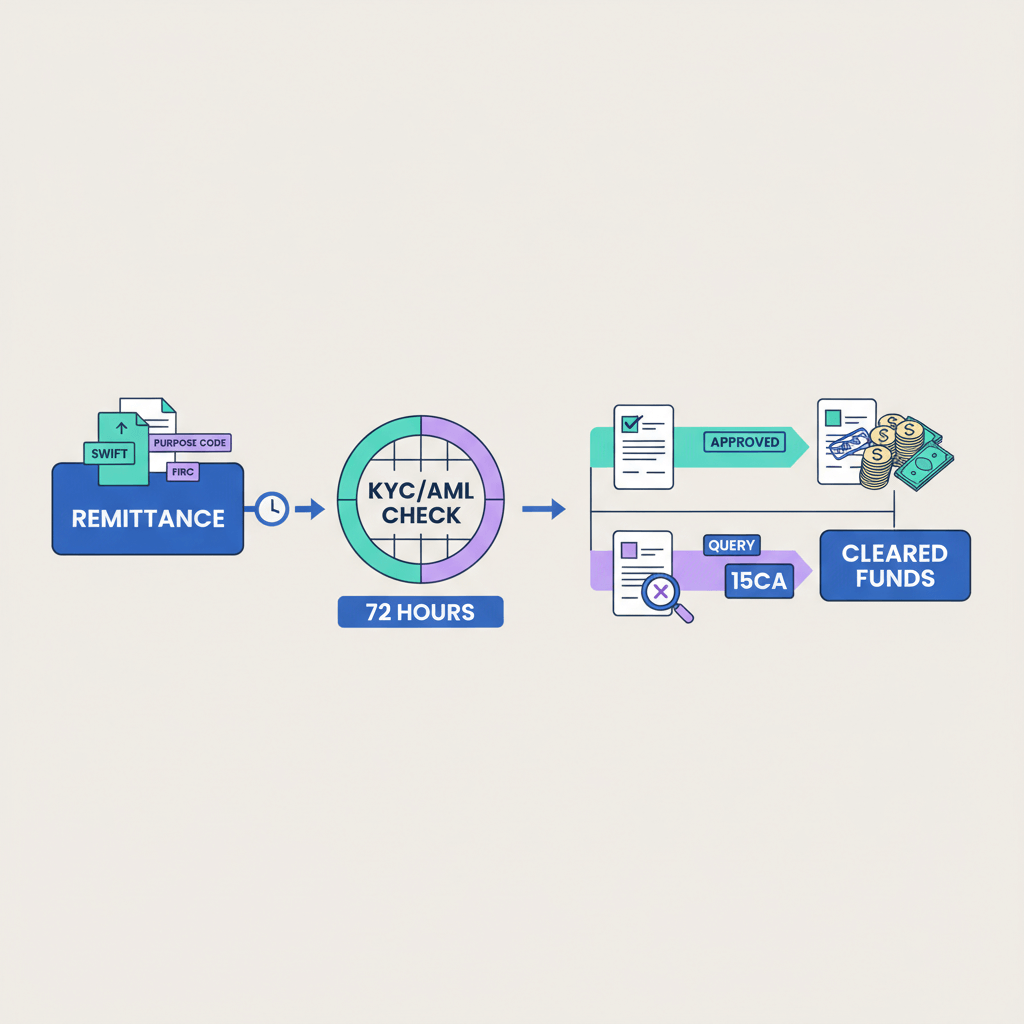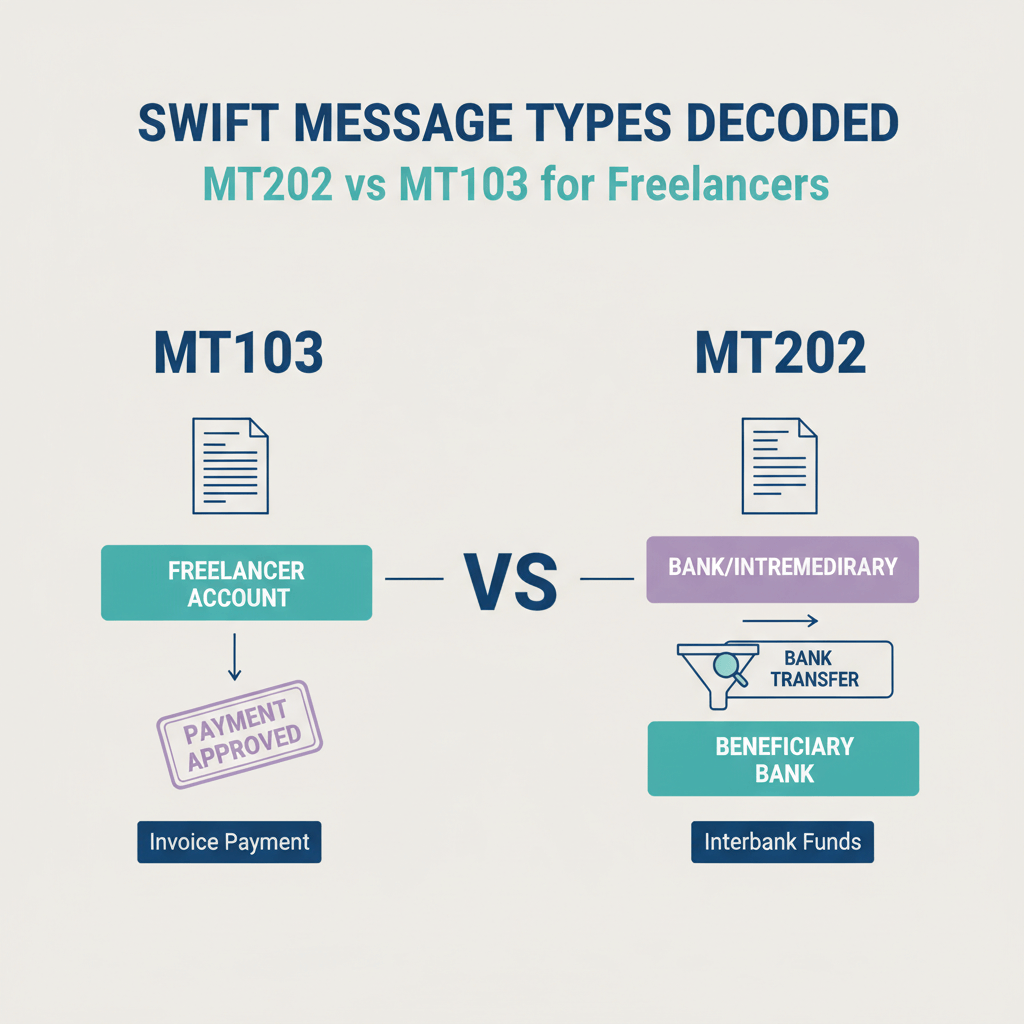Karbon generates FIRCs for all your international payments — instantly and fully compliant.
You might have been looking into foreign inward remittances to India for some time now.
But even you can't deny how time-consuming and tedious your current bank process is.
From compliance issues to exorbitant markup rates you might have paid multiple visits to your bank just to get your payments cleared (for eg: When Russia was removed from the SWIFT payment network back in 2022, it must have been a real nightmare for some of you).
There would have obviously been times when you just wanted to give up on your bank process for inward remittances and yet you just couldn't.
What probably made the whole process worse was the fact that complex banking jargon just wasn't explained to you.
So here you are in search of the inward remittance process, to know what FIRC is all about.
So in this article, we focus on all the information you need about foreign inward remittance certificates (FIRA) and FIRC and the difference between the two.
Read on …
Foreign Inward Remittance Meaning
Foreign Inward Remittance (FIR) refers to the movement of funds from a foreign source to an individual or entity in India, whether through bank transfers, cash, or financial instruments.
Foreign inward remittance has many functions like personal and business transactions, investments, etc. This inflow of funds contributes to India's foreign exchange reserves and allows international trade and investment.
What is foreign inward remittance certificate (FIRC)?
A Foreign Inward Remittance Certificate (FIRC) is a document issued by a bank to serve as evidence of international payments for exports, encompassing comprehensive remittance details. This FIRC functions as documentation for a foreign money transfer.
What is foreign inward remittance certificate (FIRC) used for?
- To inform the beneficiary in India about the foreign inward remittance received from abroad.
- To provide all the details about the remittance, including the amount, currency, and sender's information.
- To serve as supporting documentation for the incoming remittance, it can be employed for tax filings and adherence to foreign exchange regulations.
- To allow the beneficiary to track and ensure the timely receipt of their incoming funds.
- Ensures compliance with RBI’s guidelines for foreign inward remittances.
- Assists authorized dealer banks in maintaining accurate records of foreign exchange transactions.
- It helps in the monitoring and regulation of foreign exchange transactions within India.
All in all, the Foreign Inward Remittance Certificate (FIRC) is a proof of order that someone accepted international payments in India in foreign currency from another country. Banks issue this certificate, and it's important for proving that foreign transactions occurred, making sure money was received, following the rules set by the government. It helps people or businesses prove where their foreign money came from and is important for keeping things transparent and following the financial and government rules.
Is foreign inward remittance taxable in India?
In simple terms, when money comes into India, it gets taxed. If companies opt for bank transfers, they'll need to pay GST tax as additional tax charges, and this amount is generally mentioned in the debit advice, including forex margin costs. However, if they use fintech services, the money transfer process is different, and they usually pay a fixed fee of 2-3% irrespective of the volume of the transaction.
Who issues Foreign inward remittance certificates (FIRC)?
When a bank or fintech, different from the one handling the submission of export documents, receives the funds, it issues an electronic FIRC (e-FIRC) to establish a connection between the two transactions.
What are bank realization certificates or foreign inward remittance certificates?
A Bank Realization Certificate (BRC) is issued by Indian banks to exporters as proof of foreign exchange realization for goods or services exported. Crucial for international businesses, the BRC validates payment receipts in foreign currency, facilitating government incentive claims. It includes details like invoice value, amount realized, exporter's name, destination country, and relevant information.
A Foreign Inward Remittance Certificate (FIRC) is issued by banks to recipients of inward foreign remittances, evidencing funds received in foreign currency. Essential for various purposes, such as supporting foreign exchange transactions or regulatory compliance, the FIRC includes remittance details, amount, sender's information, and transaction particulars.
What is Foreign Inward Remittance Advice (FIRA) used for?
The Foreign Inward Remittance Advice (FIRA) functions as a document to provide information about the foreign remittance credited to your account. This document helps you monitor the incoming funds, ensuring prompt receipt and accurate tracking of the transaction.
Foreign Inward Remittance Advice (FIRA) Process
1. Inward Remittance Initiation
Money is transferred from international sources to the beneficiary's account in India through various avenues, including wire transfers, online banking, or correspondent banks. International wire transfers are notably recognized as one of the fastest means utilized for this transaction.
Make Note: Karbon has partners with reputed banks in the United States and hence any inward remittance coming from the US, takes hardly a few hours post your on-boarding process. Click here to learn more!
2. RBI is informed
The authorized dealer bank communicates the incoming remittance to the Reserve Bank of India (RBI) through the Electronic Reporting System (ERS). This procedure is required to be completed within two working days from the reception of the funds.
3. FIRA is generated
Once the inward remittance is reported to the RBI, the authorized dealer bank generates the Foreign Inward Remittance Advice (FIRA). The foreign inward remittance advice (FIRA) includes important details such as the beneficiary's name, address, remittance amount, currency, and sender's information.
4. FIRA is Delivered
The FIRA is then delivered to the beneficiary. If sent via email, the beneficiary can download and print the document. Alternatively, if sent by post, the beneficiary receives a physical copy of the FIRA at their registered address.
How is FIRA different from FIRC?
FIRA (Foreign Inward Remittance Advice) and FIRC (Foreign Inward Remittance Certificate) are two separate documents related to foreign inward remittances.
1. What’s the purpose?
FIRA: The FIRA acts as a communication document sent to the beneficiary in India, telling them about the foreign inward remittance received from abroad. It acts as proof of the transaction.
FIRC: The FIRC, on the other hand, is a certificate issued by the bank that received the foreign inward remittance. It certifies that the funds have been received in the beneficiary's account from a foreign source.
The FIRC is primarily used by the beneficiary for purposes like business transactions, compliance with RBI guidelines, or to claim certain benefits.
2. Issuing Institute
Who issues FIRA: The FIRA is typically generated and issued by the authorized dealer bank in India, which receives the foreign inward remittance on behalf of the beneficiary.
Who issues FIRC: The FIRC is issued by the bank in India that receives the foreign inward remittance and processes it for the beneficiary.
3. Recipient
FIRA: The FIRA is sent to the beneficiary in India who is receiving the foreign inward remittance. It provides them with all the data about the remittance.
FIRC: The FIRC is kept by the beneficiary as proof of the foreign inward remittance transaction and is often required for record-keeping, compliance, or auditing purposes.
Final Thoughts
The Foreign Inward Remittance Advice (FIRA) is a document for beneficiaries in India who receive foreign inward remittances.
Understanding the purpose and process of FIRA ensures smooth foreign inward remittances without complications.
If you're a business in India seeking seamless global banking solutions, Karbon is here to assist you! As a fintech company, we specialize in simplifying global banking for ALL Indian businesses.
Sign up to know more!
FAQ
What is FIRS?
The Foreign Inward Remittance Statement (FIRS) is a document that the bank provides to the party involved. It has all the data about the money sent to you from abroad through that bank.
You'll find information about the currency, the sender's information, etc. This statement is like a record of the incoming funds and comes in handy for things like accounting. The bank will give it to you on their official letterhead, so you know it's an authentic transaction.
When will a firm be issued an e-FIRC?
When the export proceeds for goods are received by a bank different from the one where the export documents are submitted, an electronic Foreign Inward Remittance Certificate (e-FIRC) is required to link the two.
In such cases, the banks that receive the B2B cross-border payment will issue an electronic FIRC to the EDPMS system (or Export Data Processing and Monitoring System )upon the exporter's request.
Are foreign inward remittance certificates the same as bank realization certificates?
Bank Realization Certificates (BRCs) and Foreign Inward Remittance Certificates (FIRC) are related documents, but they serve slightly different purposes.
Can we download FIRC online?
Yes, in certain instances, banks provide online platforms or services allowing the download of the Foreign Inward Remittance Certificate (FIRC). Nevertheless, the accessibility of online downloads can differ from one bank to another. It is advisable to contact your particular bank to understand their processes and ascertain whether they offer an online option for acquiring the FIRC. If online downloading is an option, the bank will likely provide instructions on accessing and obtaining the certificate through their digital platform.
Is FIRC mandatory for a GST refund?
Certainly, the Foreign Inward Remittance Certificate (FIRC) is commonly necessary for claiming Goods and Services Tax (GST) refunds. This certificate acts as proof of receiving foreign currency in India and plays a crucial role in validating the source of funds for foreign exchange transactions. For businesses involved in international transactions seeking GST refunds, presenting the FIRC is essential to ensure compliance with regulatory standards. It is recommended to review the precise guidelines and requirements outlined by the GST authorities to fulfill the accurate documentation needed for GST refund claims.
What is the LUT certificate?
In India, an LUT (Letter of Undertaking) certificate is a document submitted by a registered taxpayer to the Goods and Services Tax (GST) department. This declaration affirms the taxpayer's commitment to fulfilling all GST obligations related to the export of goods or services without making upfront tax payments. The LUT serves as an alternative to providing a refundable security for each export transaction.
With a LUT certificate, exporters can ship goods or offer services for export without paying the Integrated Goods and Services Tax (IGST) upfront. This simplifies the export process by eliminating the need for exporters to make immediate tax payments and subsequently claim refunds.
It's essential to recognize that the LUT is generally applicable to registered taxpayers engaged in exporting goods or services. The document is filed with the appropriate GST authorities, contributing to a more streamlined and efficient cross-border trade process for eligible businesses.
Is a Foreign Inward Remittance Certificate mandatory for LUT?
Yes, when you want to get a Letter of Undertaking (LUT) in India, you usually need a document called the Foreign Inward Remittance Certificate (FIRC). This certificate shows that you received money in foreign currency and is important when applying for an LUT, especially if you're a business that exports goods or services.











